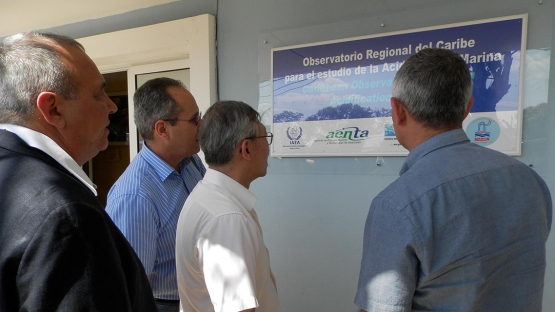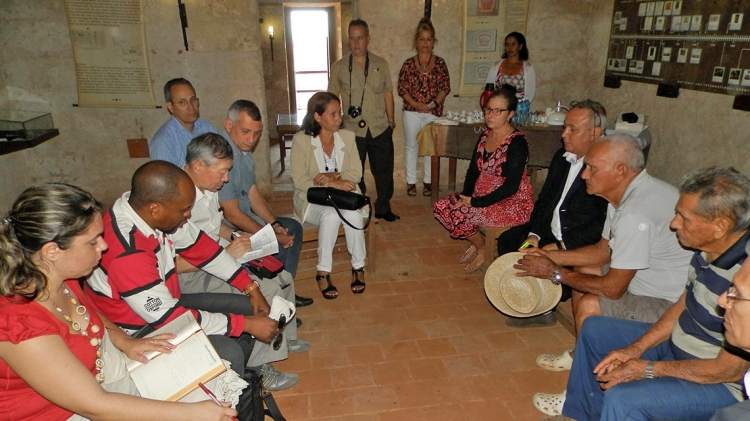An observatory for the study of ocean acidification was inaugurated yesterday in Cienfuegos, Cuba, in the presence of Mr Dazhu Yang, IAEA Deputy Director and Head of the Department of Technical Cooperation.
The observatory, part of the Centre for Environmental Studies of Cienfuegos (CEAC), is located in the Faro Luna Diving Centre in the south central province of the country.
The inauguration took place in the context of activities for World Water Day, which this year draws attention to the importance of fresh water and the sustainable management of water resources.
This scientific facility demonstrates the IAEA's strong cooperation with Cuba in the application of nuclear techniques for the study of environmental processes. This cooperation not only strengthens national capabilities, but is also integrated into the Latin American region through a regional project1 which aims to strengthen research capacities in the Caribbean region to evaluate acidification caused by emissions of CO2 absorbed by the sea, leading to a decrease in pH (the measure of acidity or alkalinity of a solution).
Over the past 15 years, CEAC has contributed to the resolution of national development problems and to the study of complex processes of global scope, such as acidification and sea level rise, harmful algal blooms, watershed salinization and the transport of contaminants in these environmental systems.
Following the inauguration, the IAEA delegation visited the Fortress of Our Lady of the Angels of Jagua, now a museum, and had a meeting with residents of Castillo de Jagua, a community of fishermen who are working with CEAC on the study of coastal areas.
The Fortress is located at the entrance of the bay of Cienfuegos, in a community with strong maritime traditions. It is the only Spanish military fortress, built at the end of the XVIII century renaissance style. It was declared a National Monument on October 10, 1978 and inaugurated as a museum on March 24, 1998.
Text and photos by Marta Contreras Izquierdo and Maikel Hernández Nuñez/AENTA
1 RLA7020, ‘Establishing the Caribbean Observing Network for Ocean Acidification and its Impact on Harmful Algal Blooms, using Nuclear and Isotopic Techniques’



